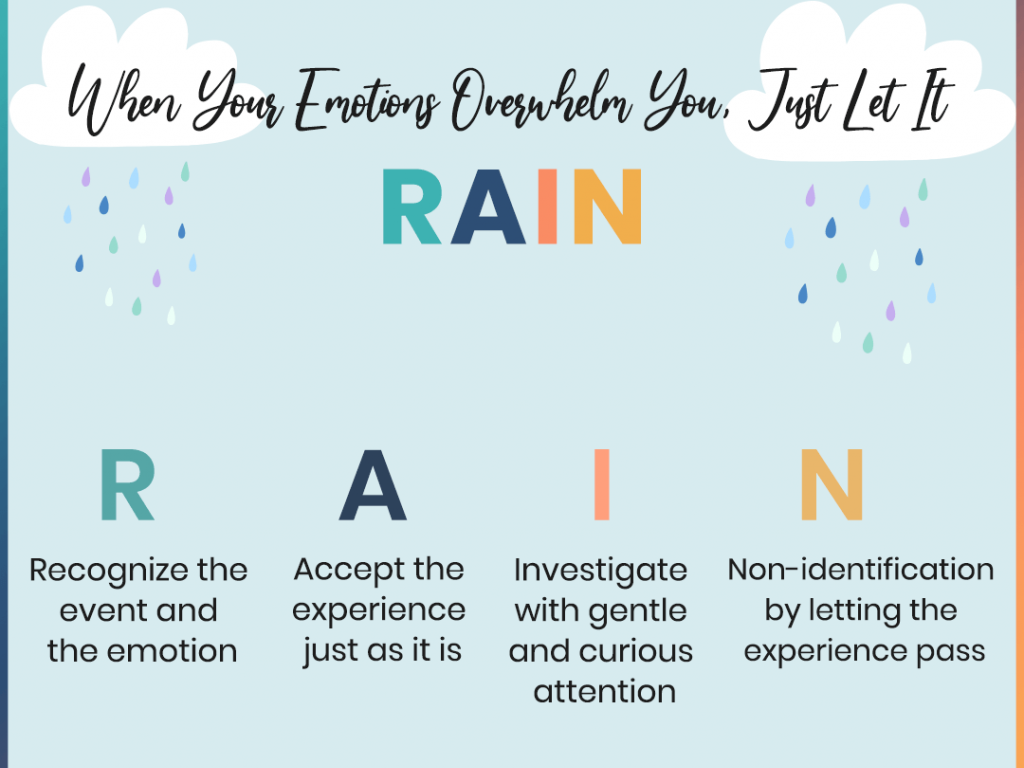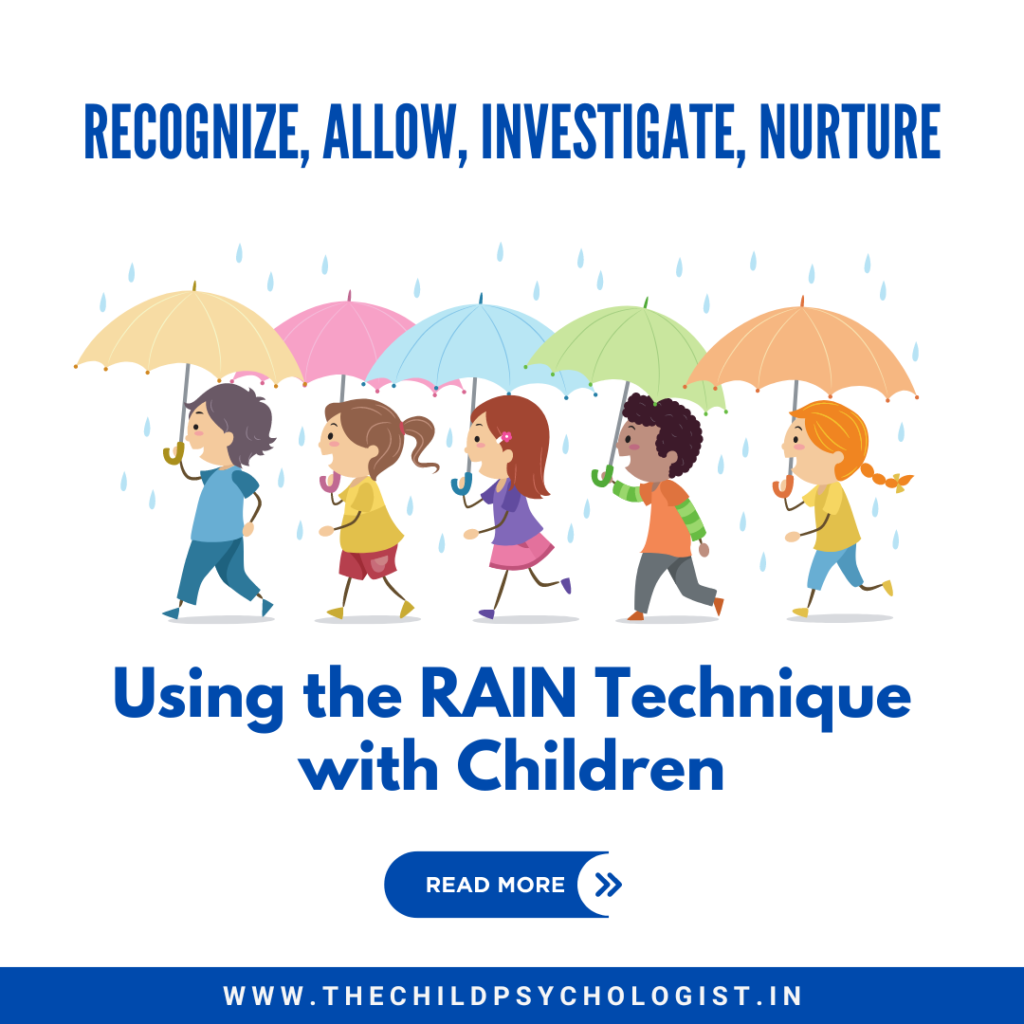The RAIN technique is a mindfulness practice that helps individuals recognize, accept, investigate, and nurture their emotions. Originally developed for adults, the RAIN technique can be adapted to help children manage their feelings and develop emotional resilience. In this blog, we will explore how to use the RAIN technique with children, emphasizing its benefits for emotional regulation and self-awareness.

What is the RAIN Technique?
RAIN is an acronym that stands for:
- Recognize: Identify what is happening
- Allow: Accept the experience as it is
- Investigate: Explore the experience with curiosity
- Nurture: Show compassion to oneself
Benefits of the RAIN Technique
The RAIN technique helps children:
- Understand and manage their emotions
- Develop self-compassion and empathy
- Enhance emotional regulation and resilience
- Improve their ability to focus and stay present
Steps to Implement the RAIN Technique with Children
Recognize
Teach your child to recognize their emotions by labeling them. Use emotion charts or ask questions like, “How are you feeling right now?” Encourage them to notice physical sensations associated with their emotions, such as a tight chest or butterflies in the stomach.
Allow
Help your child accept their emotions without judgment. Explain that it’s okay to feel a wide range of emotions and that all feelings are valid. Use phrases like, “It’s okay to feel sad” or “It’s normal to feel frustrated sometimes.”
Investigate
Encourage your child to explore their emotions with curiosity. Ask open-ended questions to help them understand the source of their feelings. For example, “What happened that made you feel this way?” or “Can you tell me more about what you’re experiencing?”
Nurture
Teach your child to show compassion to themselves. Use comforting and supportive language. Encourage them to engage in self-soothing activities such as deep breathing, hugging a favorite toy, or listening to calming music.
Using the RAIN Technique During Challenging Moments
The RAIN technique can be particularly helpful during challenging moments when emotions are intense. Here’s how to guide your child through the process:
- Recognize: “I see that you’re feeling really upset right now. Can you tell me more about what’s going on?”
- Allow: “It’s okay to feel this way. It’s important to let yourself feel your emotions.”
- Investigate: “Let’s think about what happened that made you feel this way. Can you describe what you’re feeling?”
- Nurture: “Let’s take a few deep breaths together. What can we do to help you feel better?”
Incorporating Mindfulness Practices
In addition to the RAIN technique, incorporating mindfulness practices into your child’s routine can enhance their emotional regulation skills. Activities such as mindful breathing, guided imagery, and body scans can help them stay present and manage their emotions effectively.
Handling Resistance to the RAIN Technique
Children may initially resist or struggle with the RAIN technique. Here are some tips for addressing resistance:
- Be Patient: Understand that learning mindfulness takes time and practice.
- Use Age-Appropriate Language: Simplify the concepts and use language that resonates with your child’s age and developmental stage.
- Make it Fun: Incorporate playful elements such as drawing, storytelling, or using props to make the practice engaging.
- Model the Technique: Demonstrate how you use the RAIN technique to manage your own emotions.
The RAIN technique is a powerful mindfulness practice that can help children develop emotional resilience and self-awareness. By teaching your child to recognize, allow, investigate, and nurture their emotions, you provide them with valuable tools for managing their feelings. Remember, patience and consistent practice are key to helping your child embrace mindfulness and enhance their emotional well-being.

